Introduction: Compared with the traditional casting processing mode, electric arc additive manufacturing (WAAM) can greatly shorten the delivery time of workpieces, while providing more design possibilities. With its instant production capability, it can perfectly realize the new manufacturing mode of “design today, put into production tomorrow”.
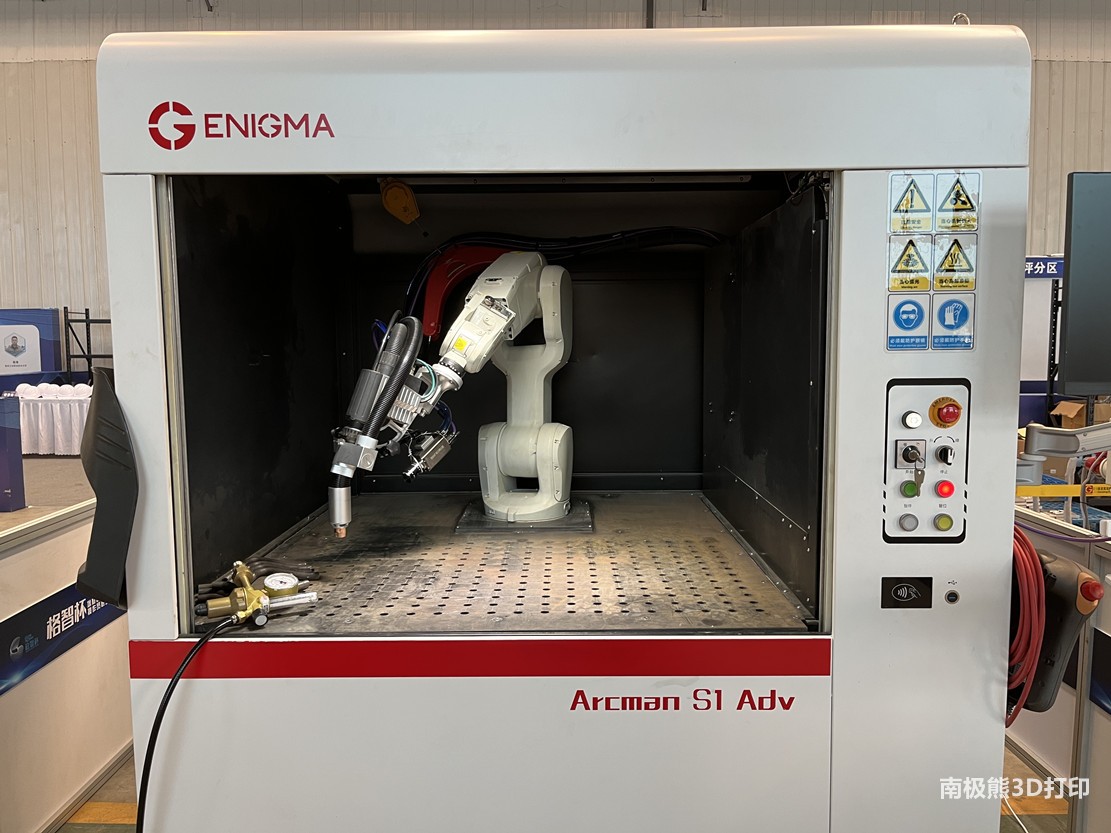
△Nanjing
Inigma
small arc metal3D printingmachine
Mark Douglass, business development manager at Lincoln Electric Additive Solutions, said: “The production of castings is a complex and lengthy process because it is limited by the multiple steps of traditional manufacturing models. Today, one of our partners – located in Ohio State-owned Euclid has used 18 WAAM robots for metal deposition3D printing, providing production capacity for large metal components, thus achieving the effect of replacing cast workpieces. The advantages this technology has demonstrated during the covid-19 pandemic became apparent as supply chains were disrupted and stretched. Additive manufacturing can deliver large metal parts in three or four weeks, while the preparation time for the same part through casting can easily be five times as long, and possibly longer in times of pandemic. “

Pictured above is a part being made at Lincoln Electric’s additive manufacturing facility in Euclid, Ohio, by artist Jenny Sabin for the University of Nebraska
medicine
The sculptural parts created at the center, which appear to be around two meters in length, also illustrate the freedom of WAAM in producing very large structures. Large parts like this can be welded together to produce very large shapes because, as Douglass (right) explains, the basic principle of the wire arc additive manufacturing process is welding anyway.
The Value of Arc Additive Manufacturing
But what is the value of electric arc additive manufacturing technology? Douglass explained: “The lack of a precise answer to this question might be seeing WAAM as a new mode of production that could serve as a partial replacement for casting.
In fact, additive manufacturing has a large degree of design freedom, and the carefully engineered part geometries and material combinations it can achieve, as well as the opportunity to change the design at will during production.Additives have much more freedom than traditional processes in the choice of rationalizing the production process, and lead times may also be much shorter, but the industry generally has not evaluated these advantages.
standard
measure or approach.
Limitations of Arc Additive Manufacturing
Of course, the arcMetal 3D PrintingThere are other limitations as well. Material cost is one of them, as the wire in Arc Additive must be delivered in a way suitable for the process. Douglass said: “We are not cost-competitive with hundreds or thousands of parts orders, casting will undoubtedly win by volume. But if the number is around 10, additive will win, but currently through casting Many of the production parts produced are also produced in small batches. The freedom that additive manufacturing brings allows it to easily change geometries to form a more diverse family of parts, with the promise of more over time work within this scope.”
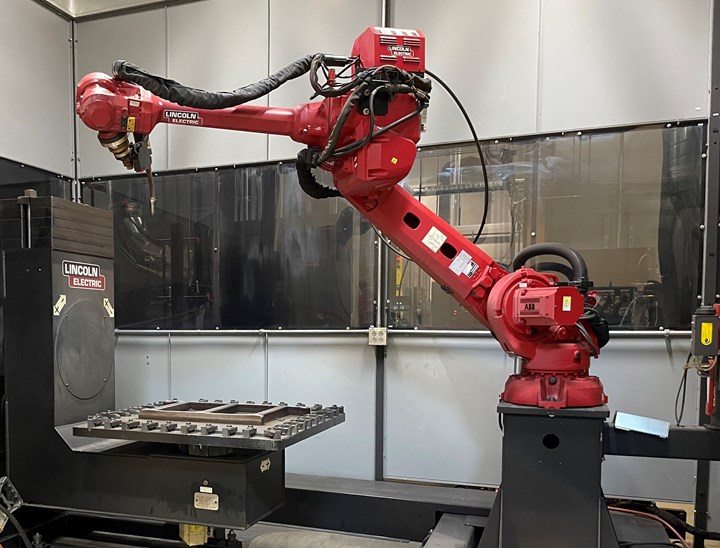
As demonstrated in the image above, robots offer more freedom than enclosed machines when it comes to depositing material at different angles around the workspace. At the same time, the welded parts produced by the metal deposition method are more stable in internal quality, and their properties are closer to forged materials, which also confirms the strong manufacturing capability of WAAM technology.
Application prospect
WAAM has taken a leap forward in manufacturing tools. Currently,
aviation
aerospace
And most other manufacturers use the WAAM system to make metal and composite tooling, which can reduce lead times and speed up part manufacturing. Cleveland’s large-scale robot, WAAM, has taken the same route as other 3D printing processes. WAAM is different in that it is widely accepted and understood because its principles are based on a welding process that has been used for over a century, although it is still fundamentally different from traditional welding techniques.
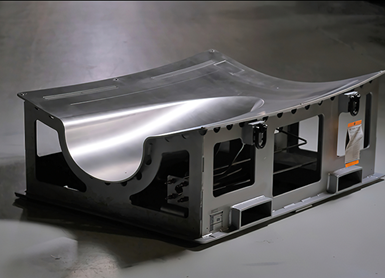
The main application of WAAM technology today is large-scale tools for the aerospace industry, which can be seen in the image above is a composite lay-up tool in which the working surface is 3D printed by Invar.
Specializing in welding for 125 years, Lincoln Electric has large customers that rely on its welding systems, including well-known heavy industry OEMs, who are also interested in realizing the flexibility and cost-saving potential of additive. Additionally, Lincoln Electric is noted for developing and producing all components of welding systems, including power sources, torches and materials, within its own organization.

The image above is a demo of a pipe joint from WAAM, please note that the build layer lines are not all parallel, this is due to robotic deposition allowing different features to be built at different angles in the same cycle, this work is to explore the construction Feasibility of using additively manufactured alternatives to multi-channel joints for offshore oil platforms.
Factors Affecting WAAM Quality
WAAM is welding, but it is continuous welding and involves fine buildup of solder joints, which also presents challenges for every process involved in the process, including deposition, metallurgy, machine automation, and even finishing. also,
software
It is also a key factor in determining the quality of WAAM. Deposition by welding is not just a matter of the tool path (or gun channel), but is also affected by the frequency and amplitude of the current waveform. “It’s unlikely that a traditional CAM software company would develop this kind of software specifically to match the WAAM process, but Lincoln did,” Douglass said.
Welding material is another important factor, standard wire can be used in WAAM, but how to correct the twist of the wire drawn from the spool and make it feed well enough for controlled deposition is all It is the problem that needs to be solved to optimize WAAM.

Another promising use case for WAAM technology is replacement parts for large machines, which is currently being researched within Lincoln Electric. Douglass said: “From the current state of manufacturers’ acceptance and application of additive technology, we must further promote the use of this technology in order to continuously improve it and open up the market.”
Manufacturing parts through WAAM has an extremely short supply chain, compared to large castings shipped from overseas foundries,Metal 3D PrintingIt is entirely possible to manufacture and machine the same parts locally and ship them to customers in the same region.
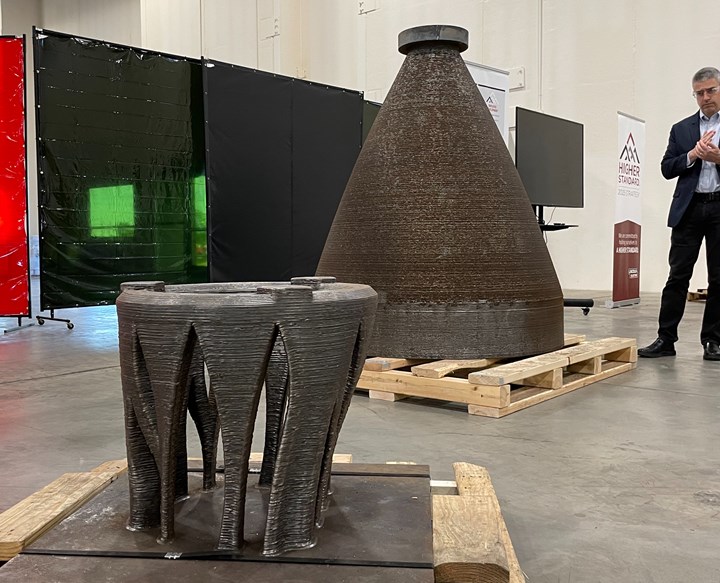
To give the robot enough height to reach the top of the part in the background and print it all in one cycle, Lincoln Electric first 3D printed the base on which the robot was mounted in the foreground.
For those buyers who require large, relatively low-volume castings, WAAM is an absolutely logical choice. For example, pressure vessels were previously done by casting, a process with a delay of 16 to 18 weeks, and WAAM can shorten this time to 4 to 5 weeks. Completion of the container blank by WAAM, followed by finish machining, combined with superior metallurgical properties, allows for the complete delivery of the part. However, there are still some obstacles to practical application of WAAM components. These vessels manufactured according to ASME standards must use welding procedures that meet specific specifications. The problem is that there has not been a standardized and standardized qualification method for WAAM welding procedures.
WAAM’s standardized road
The WAAM standard is important, it is the law that pressure vessel manufacturers need to follow. The important role of industry standards is to set a common industry baseline for defining expected part performance and quality. To use WAAM, it must comply with these standards in some way.
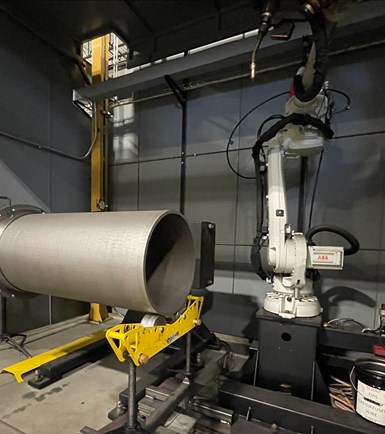
WAAM is similar to welding, but it is not welding, the main difference is that welding does not require continuous deposition, while additive manufacturing does. The test setup shown in the figure explores this difference, 3D printing the pipe as part of the nozzle life assessment.
At the end of October 2021, Lincoln Electric has announced some progress in the standardization of WAAM. Thanks to discussions by members of the Lincoln Electric Additive Solutions team, the relevant ASME code has now added a method to qualify gas metal arc additive manufacturing. WAAM procedures using low carbon steel alloys have been qualified against this system.
Douglass said that advancing arc additive manufacturing now requires alignment with relevant industry systems and standards, which is no longer a matter of technological development. Technological development is still in progress, but the technology is mature enough to even achieve small batch production. Now the bigger challenge is: Is everyone’s confidence in WAAM still there? How to realize the profitability of WAAM? What is the future production model of the WAAM industry? Antarctic bears also want to know the answers to these questions, but what is certain is that WAAM is now the main research direction in the field of additive manufacturing, and it will definitely move towards a more mature and standardized road in the future.
Arc Metal 3D Printing in China

According to Antarctic Bear, there are also some well-made arc fuse metal 3D printing manufacturers in China, especially Nanjing Inigma. In terms of arc additive manufacturing, Nanjing Inigma is one of the earliest companies in the industry. It has been deeply involved in this industry for ten years and has mastered the complete set of technologies for arc additive manufacturing, including equipment, technology, software and Materials, etc., are currently in a leading position at home and abroad.
(responsible editor: admin)


0 Comments for “The Future of Arc Metal 3D Printing: Replacing Part of the Foundry Industry”